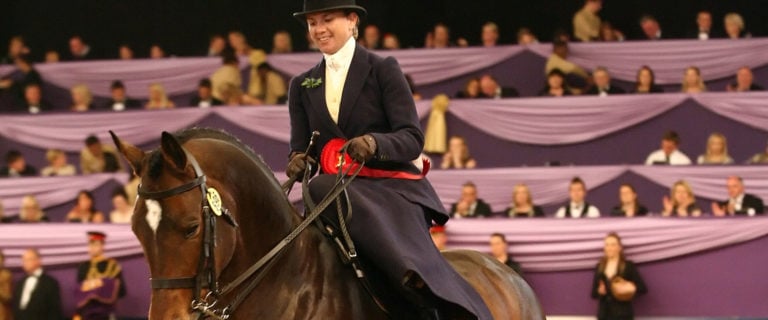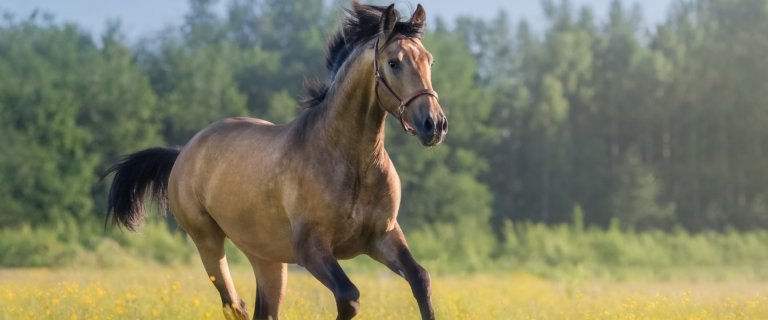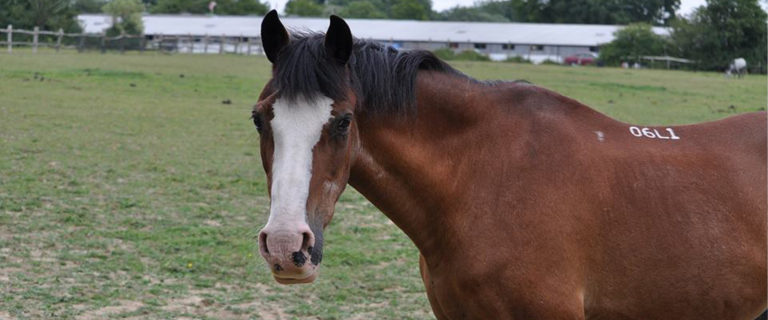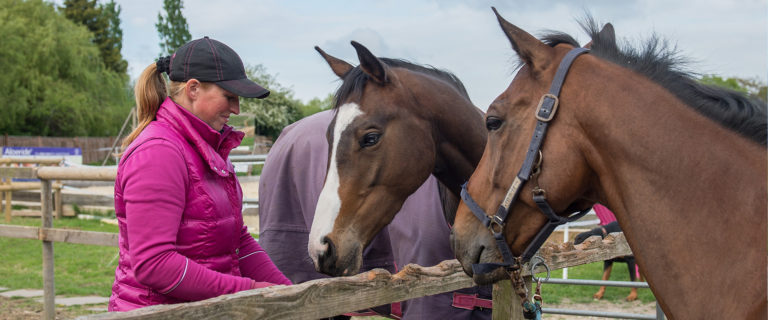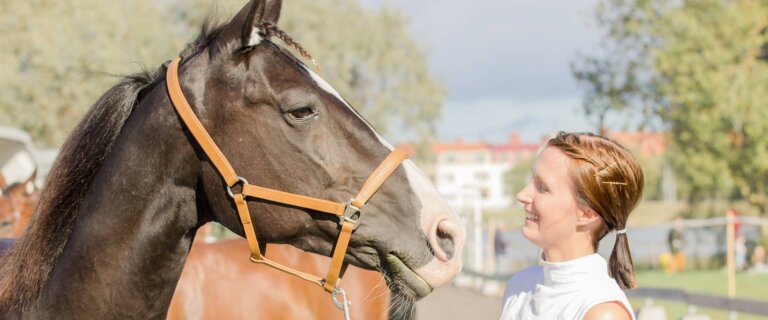Half-Pass My Way
Whether half-pass is a total mystery or you want to refine your half-passes with some new exercises, our International Dressage sponsored rider Sarah Rogers shares her top tips, exercises and advice to riding this advanced dressage movement in Half-Pass My Way.
What Is Half-Pass?
Half-pass is where the horse and rider look in the direction of movement and travel sideways along a diagonal line. The horse leads with his shoulders and should have equal bend from the poll through to the tail. You can ride half pass in the walk (for early training) and will see it featured in tests in both trot, canter and even passage.
What Are The Benefits Of Riding Half-Pass?
Riding a true and correct half-pass will improve the advanced horses’ suppleness, increases the horses’ range of mobility and is both a strengthening and supplying exercise.
Before You Attempt Half-Pass
Before you attempt to start riding your horse in half-pass, your horse needs to be proficient, supple and relaxed in shoulder-in, travers and renver. These are building blocks that lead up to the half-pass and show that the horse is both flexible enough and understanding of your aids in order to move onto teaching the half-pass movement.

The Aids For Riding Half-Pass
Your horse needs impulsion to ride the half-pass so think of an active walk and maintain the rhythm throughout the movement. You should half halt to prepare for the new movement and position the horse’s shoulders first in the direction that you want to go.
Your inside leg first gives the bend. Then the outside leg is positioned behind the girth and encourages the haunches into a half-pass positioning.
If you are riding a half-pass to the left, you will need your left leg on the girth asking the horse for bend, and your right leg will be behind the girth asking the outside hind leg to cross over and underneath his body.
You should have a contact in both reins but be careful not to pull or attempt to steer. The movement needs to come from your position, seat and leg aids, and the hand is there to guide and remain a still consistent contact with the horse’s mouth. The left rein will be asking the horse to flex softly and guide, while the outside rein is there to stop the horse from bending too much or rushing the movement.
Your upper body should always stay parallel to the horse’s shoulders. Your head should always look in the direction of the half-pass turning your shoulders in the direction of the half-pass.
How To Teach Your Horse Half-Pass
I like to start teaching my horses the half-pass in the walk. I would ride a traver down the long side of the area, then introduce only a couple of steps of half pass, then back to traver. Choose either a full diagonal line or centre line and reward your horse for trying. Some riders like to teach their horses half-pass from the leg-yield, however, be careful, as the legs can be left trailing behind, rather than the horse stepping underneath, as is correct.
A useful training exercise I use a lot is to ride down the centre or three-quarter line – ride a few steps of shoulder-in – then traver – then shoulder in again. Once your horse is understanding and supple through his rib cage and off your aids, you can incorporate a few steps of half-pass, so start with the shoulder-in – travers – half-pass then back to shoulder-in etc.
As with all new exercises, focus on the quality, NOT the quantity. A few steps at a time is ideal when teaching the horse, then focus on forward and straight. Once the horse understands your aids in the walk, you can move up to trot.

Common Problems
Too fast
Cure: If your horse if powering ahead and running, rather than stepping through it could be a confidence, suppleness or strength issue, so in the early days, don’t punish his eagerness to go forward. Just try for fewer steps and add in circles, changes of rein, transitions etc. Get your horse listening and focusing on your aids, and you should find that this element becomes less prevalent as time goes on.
Falling Out Of The Shoulder
Cure: If your horse is falling out through his leading shoulder in the movement, correct by changing back into a shoulder-in for a few steps, half halting to re-engage the hind-legs and reset the half-pass before attempting again. Keep the steps active, but less is more, so just rider two or three then ride straight.
Horse Not Bending Through Ribcage
Cure: This can often relate to stiffness in the body. Go back to basics and focus on riding 10-metre circles off the track and concentrate on suppleness. Riding decreasing circles in trot in leg-yield can also help.
Horses’ Quarters Leading
Cure: Check that this isn’t a rider error, by using too much leg and pushing the bottom over! Reduce the bend so that you concentrate more on the correct steps and body alignment until your horse is stronger.

Take-Away-Tips
Short & Sweet – Don’t be tempted to do too much too soon. Less is more.
Don’t ride half passes too steep and keep the lines long and fluid.
Don’t expect perfection and don’t expect both reins to be equal. Just like us, horses can have a better side. In the early days, I tend to teach on the horses’ ‘better rein’, then once the horse understands the aids, only then will I start to teach on the ‘weaker’ rein. Giving your horse confidence when teaching something new is so important, regardless of age and experience.
Plenty of forward and stretch in between and always include a good warm-up and cool-down in your schooling sessions.
Once your horse is more experienced in this movement and stronger, I like to ride the half-pass using different tempos within: collected then more forward in-between. This is an excellent exercise to teach the horse so that if the trot begins to ‘die’ in the movement, you have the perfect rescue remedy!
About Sarah Rogers:
Sarah is a British dressage rider who rides and competes for the Bechtolsheimer family. Previously, Sarah was based in Germany for five years, where she trained and competed for Klaus Balkenhol. Working with Klaus and Annabel Balkenhol (Klaus’s daughter) Sarah broke and produced numerous young horses, as well as training the more advanced horses and competing up to Grand Prix. Sarah also spent three years in Paris competing for International Dressage Judge Marietta Almasy where she had a lot of success also.
Sarah is sponsored by Aloeride www.aloeride.com, a pure organic aloe-vera supplement harnessing the power of nature to support healthy hooves, digestion, coat and skin.
About Rosie:
Rosie is owned Mrs Bechtolsheimer & Laura Tomlinson. Rosie was competing at Advanced Medium at the time of this shoot, but is now competing at Grand Prix level.
Photography by Lucy Merrell



